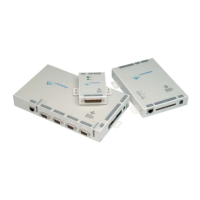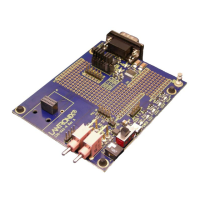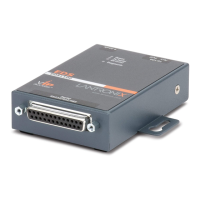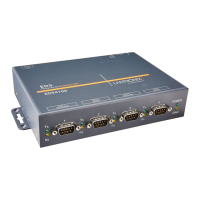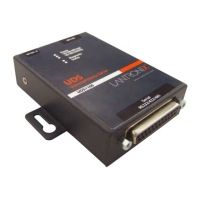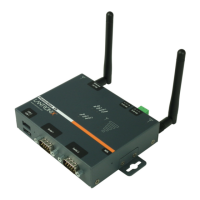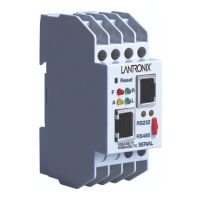Appendix F: Protocol Glossary
SLC™ Console Manager User Guide 330
Dial-back—The SLC console manager waits for a peer to call the SLC device, establishes a text
(command line) or PPP connection, authenticates the user, and if the SLC console manager is
able to determine a dial-back number to use, hangs up and calls the dial-back number to establish
either a text or PPP connection.
For text connections, the user will be prompted for a login and password, and will be
authenticated via the currently the currently enabled authentication methods (Local Users,
NIS, LDAP, etc). Once authenticated, the SLC device will use the Dial-back Number
configured for the modem – either a fixed number assigned to the modem, or a number
associated with the user that was authenticated (the user must have Allow Dial-back enabled
and a Dial-back Number defined). If the SLC console manager can determine a dial-back
number to use, it will hang up and wait Dial-back Delay seconds before initiating the dial-
back. The SLC device will dial, prompt the user again for a login and password, and a CLI
session will be initiated. The user will remain connected to the SLC console manager until they
either logout of the CLI session, or (if Timeout Logins is enabled) the CLI session is
terminated if it has been idle.
For PPP connections, the user will be authenticated via PAP or CHAP (configured with the
Authentication setting). For PAP, the Local User list will be used to authenticate the login and
password sent by the PPP peer. For CHAP, the CHAP Handshake Host/User Name and
Secret/User Password will be used to authenticate the login and password sent by the PPP
peer. Once authenticated, the SLC device will use the Dial-back Number configured for the
modem – either a fixed number assigned to the modem, or a number associated with the user
that was authenticated (the user must have Allow Dial-back enabled and a Dial-back
Number defined). If the SLC console manager can determine a dial-back number to use, it will
hang up and wait Dial-back Delay seconds before initiating the dial-back. The SLC device will
dial, and if the remote peer requests PAP or CHAP authentication, provide the Dial-out Login
and Dial-out Password as authentication tokens. Once authenticated, a PPP session will be
established using either negotiated IP addresses or specific IP addresses (determined by the
Negotiate IP Address setting).
Dial-on-demand—The SLC console manager automatically dial outs and establishes a PPP
connection when IP traffic destined for the peer needs to be sent. It will remain connected until
no data packets have been sent to the peer for a specified amount of time. The modem cannot
be configured for Negotiate IP Address – it must be configured with a Local IP and a
Remote IP as the PPP connection will be established when it sees IP traffic destined for the
Remote IP. When this occurs, the SLC device dials the Dial-out Number, and if the remote
peer requests PAP or CHAP authentication, provides the Dial-out Login and Dial-out
Password as authentication tokens. Once authenticated, a PPP session will be established
using the Local IP and the Remote IP. The PPP connection will stay active until no IP traffic
for the Remote IP is sent for Modem Timeout seconds. Once the timeout has expired, the
PPP connection will be terminated and will not be reestablished for at least Restart Delay
seconds.
Dial-in and Dial-on-demand—A modem is configured to be in two modes: answering
incoming calls to establish a PPP connection, and automatically dialing out to establish a PPP
connection when IP traffic destined for the peer needs to be sent. When either event occurs
(an incoming call or IP traffic destined for the peer), the other mode will be disabled. The
modem cannot be configured for Negotiate IP Address – it must be configured with a Local
IP and a Remote IP as the PPP connection will be established when it sees IP traffic destined
for the Remote IP.
For Dial-in, the user will be authenticated via PAP or CHAP (configured with the
Authentication setting). For PAP, the Local User list will be used to authenticate the login and
password sent by the PPP peer. For CHAP, the CHAP Handshake Host/User Name and
Secret/User Password will be used to authenticate the login and password sent by the PPP
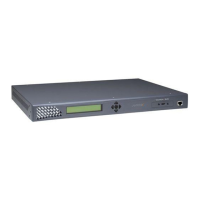
